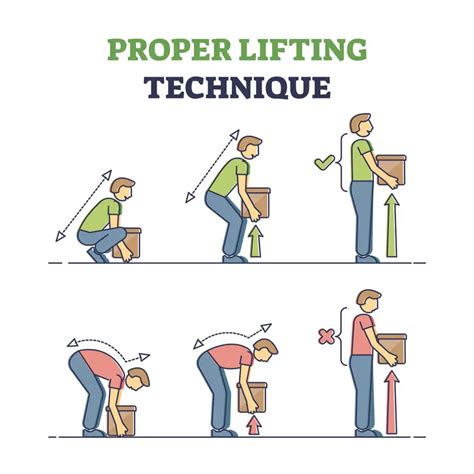How to break strength plateaus and optimize muscle growth for peak performance?

Every serious lifter eventually encounters a dreaded strength plateau—a period where progress stalls, weights feel heavier, and gains seem impossible. Far from being a sign of failure, plateaus are a natural part of the fitness journey, indicating that your body has adapted to your current stimulus. The key to unlocking continued muscle growth and achieving peak performance lies in understanding why these plateaus occur and implementing smart, strategic adjustments to your training, nutrition, and recovery.
Understanding the Plateau Phenomenon
A strength plateau signifies that your body is no longer sufficiently challenged to elicit a new adaptive response. What once worked to build strength and size has now become routine, and your muscles have grown efficient at performing the same tasks. This efficiency, while good in some contexts, is the enemy of continued progress in strength training. Breaking through requires a conscious effort to introduce new stressors that force your body to adapt again.

Common Culprits Behind Stagnation
Several factors can contribute to hitting a wall in your training. The most common include a lack of progressive overload, inadequate nutrition or hydration, insufficient recovery, poor exercise technique, and a monotonous training program.
Lack of Progressive Overload
This is arguably the most fundamental principle of muscle growth. If you’re not consistently increasing the demand on your muscles—whether through more weight, reps, sets, or time under tension—they have no reason to grow stronger or larger. Sticking to the same routine with the same weights month after month guarantees stagnation.
Inadequate Recovery and Nutrition
Muscle growth doesn’t happen in the gym; it happens during recovery. Without proper sleep and sufficient calories and macronutrients (especially protein), your body simply cannot repair itself and build new muscle tissue effectively.
Poor Exercise Technique
Compromised form not only increases injury risk but also prevents the target muscles from receiving the intended stimulus. If you’re using momentum or relying on secondary muscles, your primary movers aren’t being challenged to their full potential.
Strategies to Shatter Plateaus and Boost Growth
1. Revamp Your Progressive Overload Approach
Think beyond just adding more weight. Progressive overload can take many forms:
- Increase Weight, Reps, or Sets: The most straightforward method. Aim for one more rep, one more set, or a small increase in weight over time.
- Decrease Rest Intervals: Shortening the time between sets increases workout density and metabolic stress, challenging your cardiovascular system and muscles differently.
- Increase Time Under Tension (TUT): Slow down the eccentric (lowering) phase of an exercise, or pause at the peak contraction. This prolongs the muscle’s work and creates a deeper stimulus.
- Increase Training Frequency: Train a muscle group more often per week, allowing for more practice and overall volume accumulation.
2. Prioritize Nutrition and Hydration
Fuel your body for growth. Ensure you’re consuming enough protein (1.6-2.2g per kg body weight), adequate complex carbohydrates for energy, and healthy fats. Stay well-hydrated throughout the day, as even mild dehydration can impair performance and recovery.

3. Master Recovery: Sleep and Deloads
Aim for 7-9 hours of quality sleep per night. This is when your body releases growth hormone and performs most of its repair work. Incorporate strategic deload weeks every 6-12 weeks, reducing volume and intensity to allow your body and central nervous system to fully recover and prepare for renewed progress.
4. Optimize Exercise Technique and Form
Regularly review and refine your exercise form. Consider filming yourself or getting feedback from an experienced coach. Perfecting your technique ensures the target muscles are fully engaged, maximizing stimulus and minimizing injury risk.

5. Implement Periodization and Training Variety
Don’t stick to the same exercises indefinitely. Introduce variations of primary lifts (e.g., pause squats, incline bench, deficit deadlifts). Implement different training blocks with varying rep ranges, intensities, and volumes (e.g., strength focus, hypertrophy focus, endurance focus) to keep your body guessing and adapting.
6. Consider Strategic Supplementation
While whole foods are paramount, certain supplements can aid recovery and performance. Creatine monohydrate, whey protein, and branched-chain amino acids (BCAAs) or essential amino acids (EAAs) are well-researched options that can support muscle growth and strength. Always consult a healthcare professional before starting new supplements.

The Mental Game: Consistency and Patience
Breaking plateaus is as much a mental game as it is physical. Stay consistent with your efforts, be patient, and trust the process. Not every session will feel like a personal best, but persistent, intelligent effort will yield results over time. Track your progress meticulously to identify what works and what needs adjustment.
Overcoming strength plateaus is not about working harder, but about working smarter. By strategically manipulating your training variables, prioritizing optimal nutrition and recovery, and remaining consistent, you can bust through any stagnation and continue on your path to unprecedented muscle growth and peak performance. Embrace the challenge, learn from the experience, and watch your strength soar to new heights.









